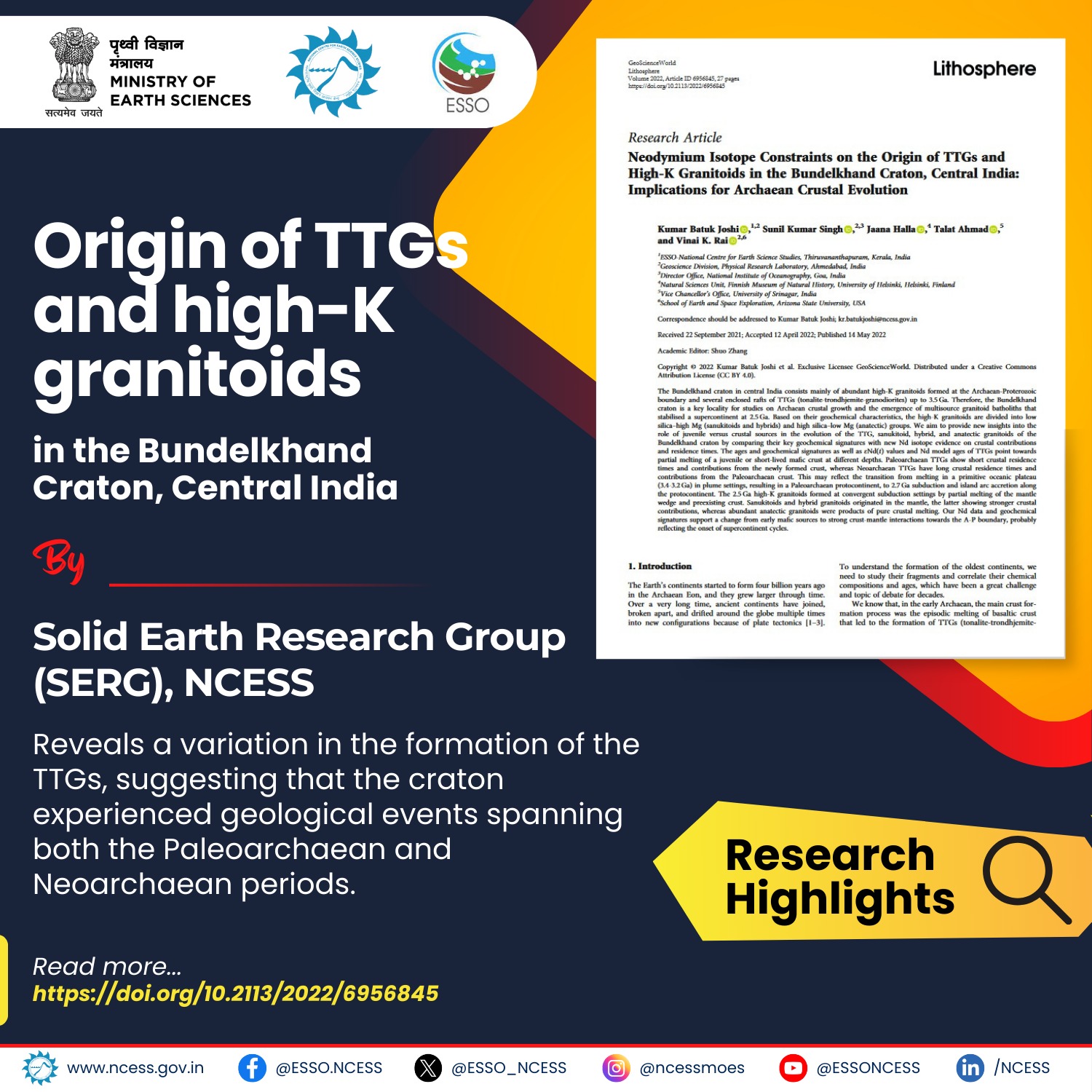
Combined geochronology, geochemical signatures, and Nd isotopic compositions allow us to draw the following conclusions on the evolution of the Archaean granitoids of the Bundelkhand craton: (1) The TTGs of the craton had formed as a result of partial melting of juvenile mafic crust at different depths with contributions from newly formed felsic crust in the Paleoarchaean and older felsic crust in the Neoarchean; (2) The 2.5 Ga high-K granitoids of the craton had formed at convergent subduction settings by partial melting of the mantle wedge and pre-existing crust. Sanukitoids and hybrid granitoids originated in the mantle, the latter showing stronger crustal contributions, whereas abundant anatectic granitoids were the results of the melting of the continental crust.
Bibliographic Info: Kumar Batuk Joshi, Singh, S. K., Halla, J., Ahmad, T., Rai, V. K. (2022). Neodymium isotope constraints on the origin of TTGs and high-K granitoids in the Bundelkhand Craton, Central India Implications for Archaean crustal evolution. Lithosphere, Vol. 2022 (Special 8), Art. 6956845. https://doi.org/10.2113/2022/6956845.




 RTI Act
RTI Act